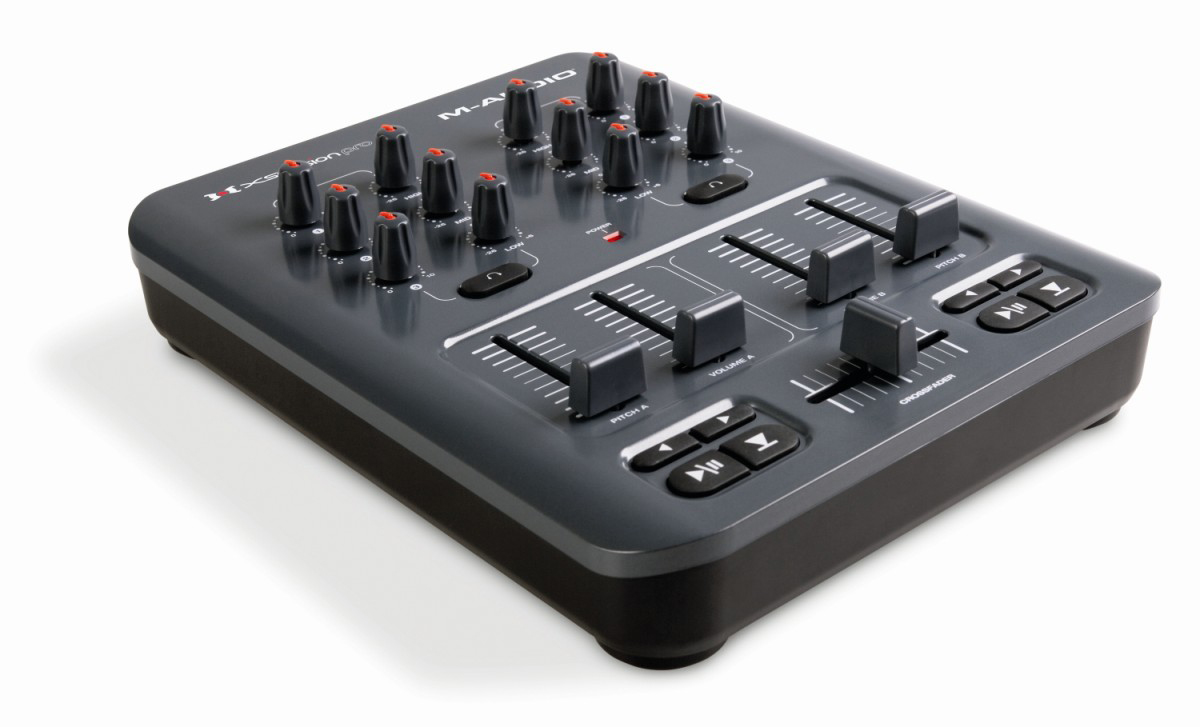MusicRadar Verdict
If you really want something like this, then the X-Session Pro is a reasonable buy... but do you really want something like this?
Pros
- +
Lightweight and portable. Plug and play.
Cons
- -
Restrictive layout and labelling. No clip-triggering buttons for Live. No master volume fader or rotary. Won’t radically improve your performances. Not expensive, but still not worth the outlay for most.
MusicRadar's got your back


Lots of companies produce MIDI controllers, but few release new ones as frequently as M-Audio. Its latest is an enhanced version of the X-Session control surface that they've been selling for the past few years.
As with most M-Audio products, the build quality is adequate but not exactly rugged. This is a very light, portable product, and the XSP's class compliancy means that there's no need to mess about with any drivers.
As expected, it worked straight away when we plugged it in.
Features
On the XSP's top panel you'll find 12 rotary knobs, four vertical faders, a crossfader and ten buttons. Each of these controls can be assigned to whatever you like, but to help those who are stumped for ideas, M-Audio have provided front-panel labelling that conforms to a two-channel mixing setup.
In practice, your controller assignments will largely depend on your software. Live users, for example, will have no need for pitch faders, and few will see the crossfader as an essential tool. Scratch DJs will need it, obviously, but the chances are they'll all be using real audio mixers anyway.
And this highlights the major flaw with the XSP: its layout means it's totally optimised for a conventional two-channel mixing role, but even straight DJing programs like Traktor 3 now offer four channels or more.
In Live, you can use it to control volume and a few EQ or effects parameters on four channels, but you can't really trigger clips or scenes or control monitoring of more than two channels.
Want all the hottest music and gear news, reviews, deals, features and more, direct to your inbox? Sign up here.
And to be honest, if you're running your DJing software through a multiple output soundcard, we'd recommend skipping the MIDI mixing fader system altogether and just running multiple channels into a hardware DJ mixer. You'll get much more stable and sonically impressive results, and your performances will be more fun (both for you and your audience).
So, although the XSP does exactly what it says on the tin, we just don't think that the tin should ever really have been placed on the shelf in its present form. There's nothing especially bad about it, but there are far better performance controllers out there.
Fans of the traditional two-channel mixing concept will find that the XSP functions pretty much as it should, but forward-thinking DJs should look elsewhere.
MusicRadar is the number 1 website for music makers of all kinds, be they guitarists, drummers, keyboard players, djs or producers...
GEAR: We help musicians find the best gear with top-ranking gear round-ups and high- quality, authoritative reviews by a wide team of highly experienced experts.
TIPS: We also provide tuition, from bite-sized tips to advanced work-outs and guidance from recognised musicians and stars.
STARS: We talk to musicians and stars about their creative processes, and the nuts and bolts of their gear and technique. We give fans an insight into the actual craft of music making that no other music website can.
